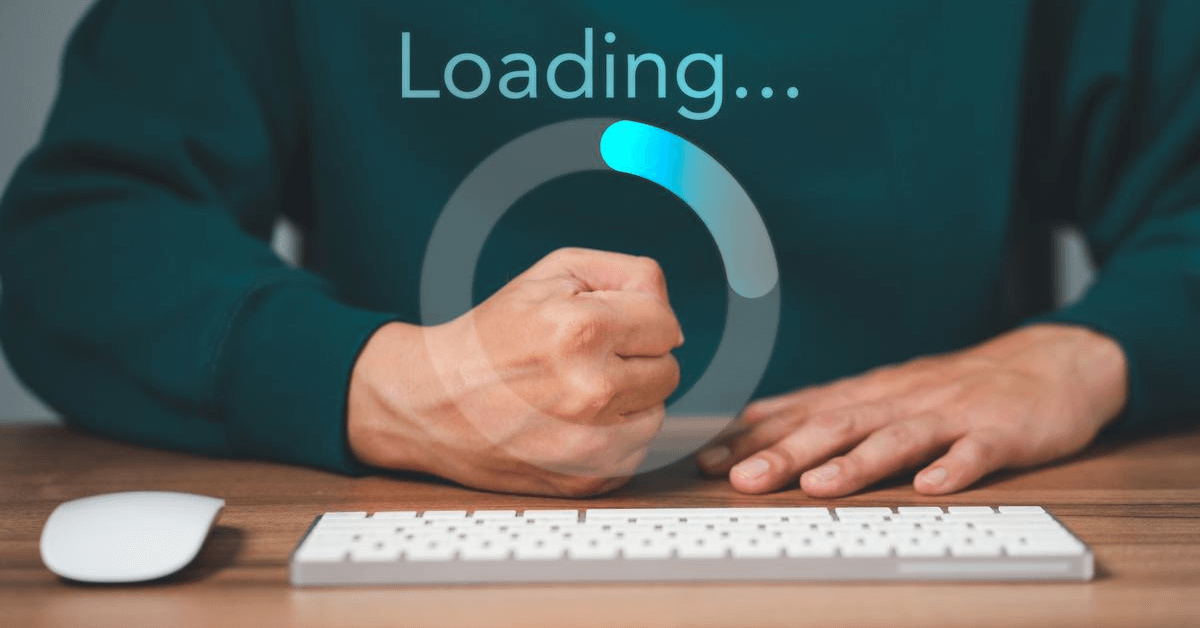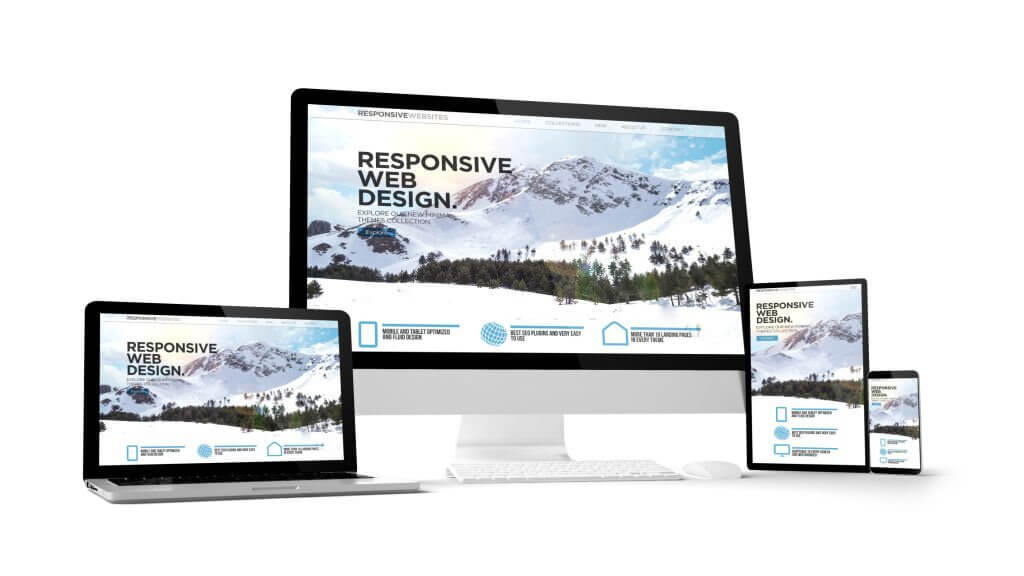Crawlers always look for sites that are easy to load and function. And Google considers ranking websites which are easy to navigate and function.
SEO consists of a variety of building blocks, and website speed is an important building block that helps bring SEO together.
In this blog, we will discuss the effects of a slow speeding website and how it can affect your SEO. We will also provide detailed ways to improve your site speed and SEO.
Understanding Website Speed
Before getting into the technicalities of site speed and SEO, let’s get to know a little about website speed. Site speed refers to how fast your entire website loads as users browse through it. You can leverage Google’s Site Speed report in Analytics to view how quickly users can interact with and see content on your site.
Your website speed plays a crucial role in your SEO, as users prefer and align with websites that load quickly and function smoothly. Moreover, with the recent upgrades, Google has also made it clear that website speed rating is a crucial factor for your website ranking, and slow-loading websites are penalised in search engine page results. Thus, it is important to prioritise your website speed.
Site Speed And SEO Goes Hand In Hand
Crawlers only find your website appealing if it is highly optimised and loads swiftly. A swift website helps in amplifying user experience. When a site loads quickly, it makes users happy because they can find answers to their questions faster. This also helps in SEO, as Google tends to reward websites with faster loading times by ranking them higher in search results.
So, it can be said that site speed and SEO go hand in hand when it comes to how fast a page loads. People want quick answers, and they usually turn to search engines to find them. When search engines see that certain websites load faster and are more popular among users, it becomes an important factor in determining their rankings in search results.
Core Web Vitals: What Is It?
Core Web Vitals, as designated by name, are an important part of Google’s effort to enhance user experience on the web. They provide specific guidelines for quality signals that assist in delivering a great website experience for crawlers.
Google has recently cleared the air and confirmed that Core Web Vitals will directly impact a website’s rankings in search results, making them even more significant for site owners and developers.
The current set of Core Web Vitals focuses on three key metrics: Largest Contentful Paint, First Input Delay, and Cumulative Layout Shift. These metrics measure how users experience a webpage in terms of loading speed, interactivity, and visual stability.
- Largest Contentful Paint (LCP) measures the time it takes for the largest content on the page to be visible to the user. Google recommends that this should happen within 2.5 seconds of the page loading.
- First Input Delay (FID) captures how responsive a website is to user interactions. It measures the time it takes for the browser to respond after a user interacts with the page. Google suggests that FID should be less than 100 milliseconds for a positive user experience.
- Cumulative Layout Shift (CLS) assesses visual stability. If elements on a page shift around unexpectedly after loading, it can lead to a poor user experience. Google recommends keeping the CLS score below 0.1 to ensure visual stability.
Check Your Website Speed Rating And Performance
1- Core Web Vitals
The Core Web Vitals report is available in Search Console and is categorised for Desktop and Mobile URLs.
With Mobile-First Indexing, it’s essential to prioritise the speed of your mobile pages for SEO. The Core Web Vitals report labels URLs as “Poor,” “Needs improvement,” or “Good” based on their performance on specific devices.
A Key Tip: To improve your site’s performance, start by focusing on URLs labelled as “Poor” in the report. These are the pages that need the most attention and improvement since they are farthest from meeting the desired standard. By working on these pages first, you can make significant strides in enhancing your site’s user experience and SEO ranking.
2- Google Page Speed Insights
You can use the Google PageSpeed Insights tool (PSI) to measure the performance of individual pages on your website. It rates your page on a scale from 0 to 100 based on Google’s recommendations for both mobile and desktop performance. The tool also provides valuable suggestions on how to improve your page load speed.
3- Screaming Frog
Screaming Frog is a helpful tool that allows you to easily audit and gather page speed or site speed data in one convenient place. It makes it simple to identify which pages on your website need improvement quickly.
After creating the audit in Screaming Frog, you can analyse the website speed rating issues and address them in a streamlined manner.
Improve Your Website Speed With These Easy Tricks
Now that you have understood what metrics go into website speed rating, you will now need to learn how to improve your overall site load speed. Below are a few easy ways you can improve site speed loading time and amplify your Core Web Vitals score.
1- Leverage Browser Caching
When a crawler visits your website, the resources needed to display the page are fetched over the internet. This process involves multiple back-and-forth trips between the user’s device and the server, which sometimes can cause delays and block the rendering of the site’s content.
To save time and improve performance, you can set up a caching policy for all server responses (resources). This policy should include the following details:
- Specify if the resource can be cached.
- Define who can cache it.
- Determine how long it should be cached.
- Decide if it can be re-validated when the cache expires.
By setting up these caching policies, the user’s device will know when it can reuse a previously-fetched response.
2- Avoid Landing Page Redirects
A landing page redirect usually happens when there are multiple redirects from a URL to reach the final landing page. This is often referred to as a redirect chain or loop.
It only occurs when a website has redirects to its mobile site, which can be eliminated with responsive design. It can also happen if there are too many redirects on the site that were lost track of.
This results in a delay in page rendering because each redirect requires an additional HTTP request-response cycle. To improve page loading speed, it’s best to eliminate unnecessary redirects by implementing a fully responsive website and updating redirects to go directly to the final destination.
3- Minify Resources
Another great way to improve your site loading speed is by reducing the size of CSS, HTML, and JavaScript resources through a process called minification. Minification removes any unnecessary data, like formatting and coding comments, without affecting how the browser processes the resource.
You can use the following minification tools to help:
- HTML Minifier (for HTML)
- CSS Nano (for CSS)
- Uglify JS2 (for JavaScript)
- Page Speed Module (for all three)
4- Enable Compression
Another great way to speed up your websites is by enabling Gzip compression on your web server. This compression makes the files much smaller, so they can be downloaded faster. As a result, your website’s loading time improves, providing a smoother and quicker user experience.
5- Optimise Images
We all know that images play a vital role in making a website visually appealing, but did you know that they can also slow down the page loading time because they make up most of the downloaded bytes? To speed up your website, it’s crucial to optimise images.
Optimising images involves a few factors, like analysing their importance, quality, encoded data, pixel dimensions, and format capabilities. The main aim is to reduce the image file size without compromising its quality too much.
6- Reduce Server Response Time
The server response time, as suggested by its name, is the time it takes for your server to load the HTML needed to show your webpage.
Ideally, your server response time should be below 200 milliseconds, and it should stay relatively consistent across different tests. If it goes above 200 milliseconds or varies significantly, you’ll need to investigate the issue.
7- Prioritise Visible Content
To enhance the user’s experience when visiting a website, make sure the most important content, known as the “above-the-fold” content, loads quickly in the initial view. This means structuring your HTML in a way that prioritises loading the crucial part of the page first, before the rest of the content.
When the above-the-fold content loads first, users can see and interact with essential information without delay. If this content doesn’t load first, additional round trips are needed, making users wait longer for the full page to load.
Bottom Line
A website that lacks speedy optimisation and swift controls is never a crawler’s best friend. A slow website can negatively impact your rankings on search engines and lead to a frustrating experience for your visitors. However, to improve your website’s speed performance, you can focus on Core Web Vitals metrics to get a complete insight into your website’s speed performance and take the necessary steps to improve your website’s speed. If your website is also facing lag issues regardless of following the above improvements, try getting in touch with experts at Cyber Creation. Cyber Creation is the best SEO agency in London that offers SEO experts and skillful web designers that ensures that your website loads quickly, perform well, and receives better rankings on search engines, ultimately leading to an influx of traffic.






 SEO Services In London
SEO Services In London SMM Services In London
SMM Services In London PPC Services In London
PPC Services In London Web Design Services
Web Design Services